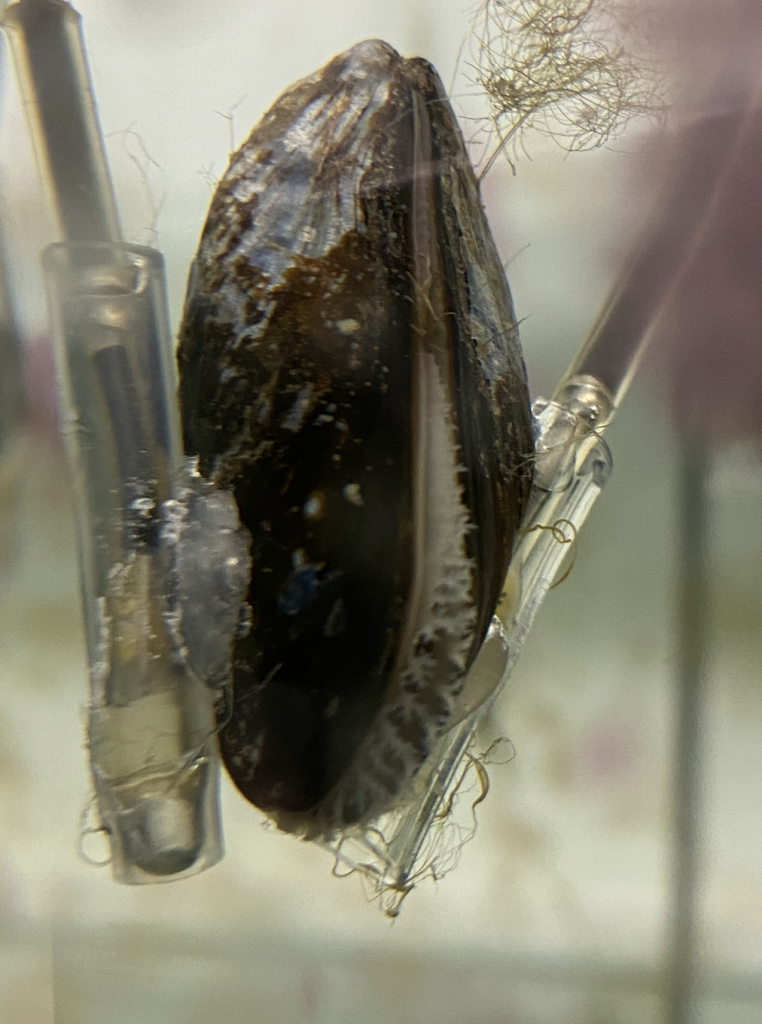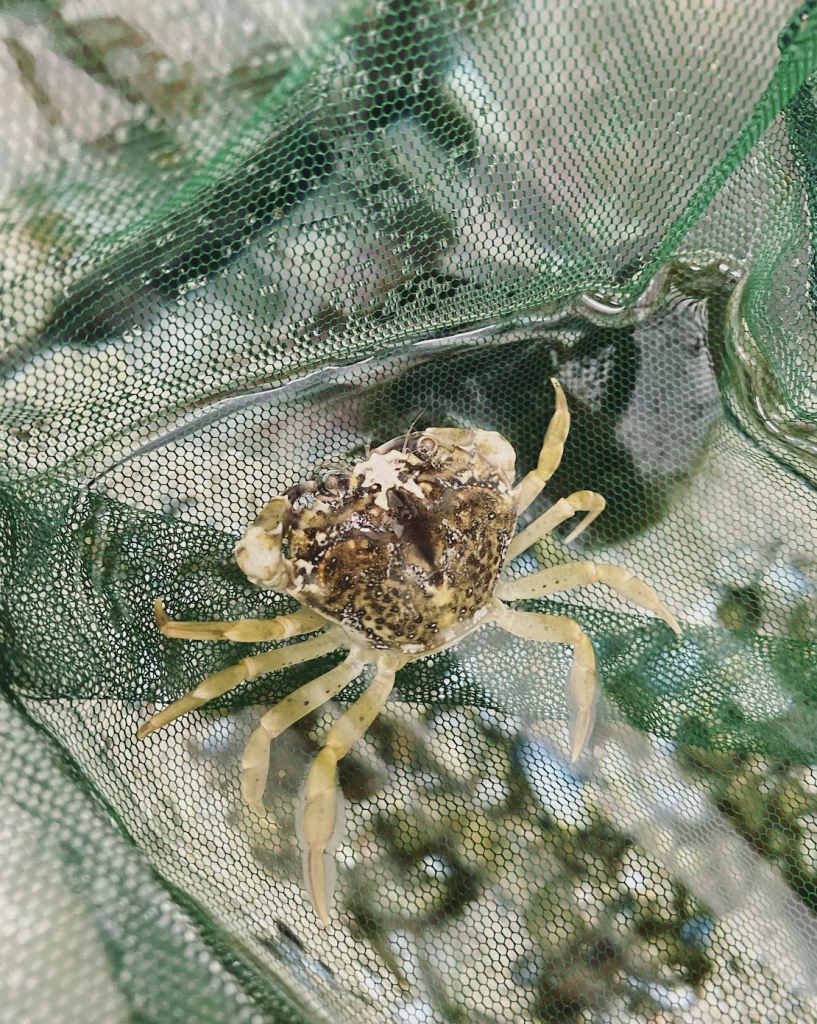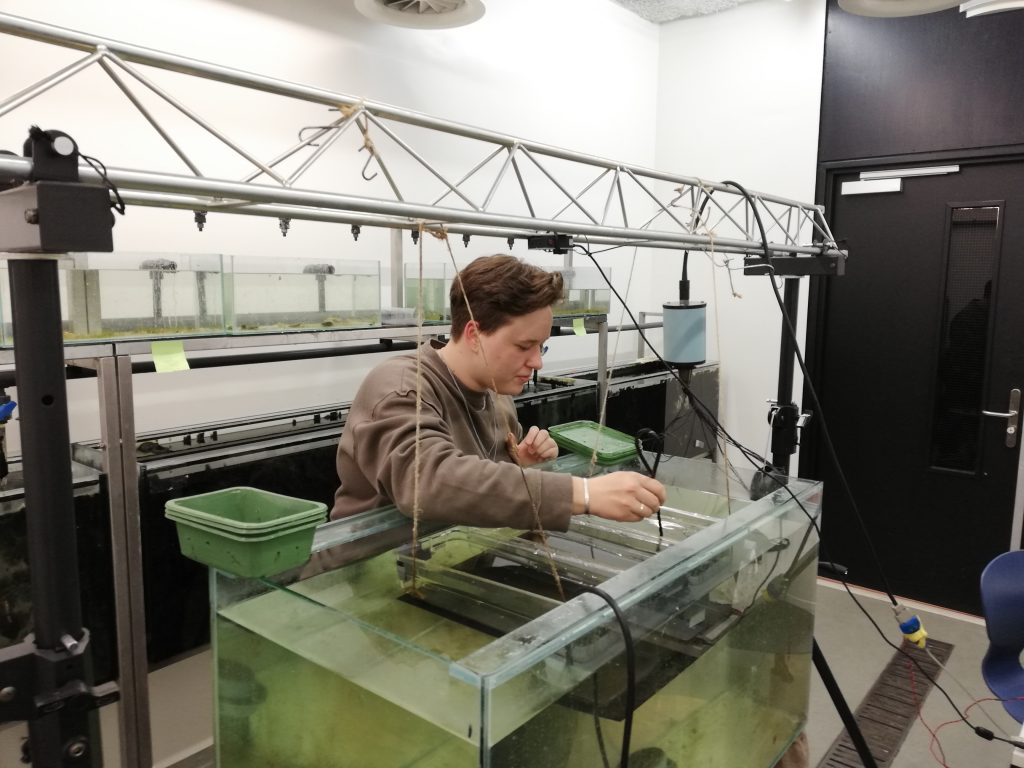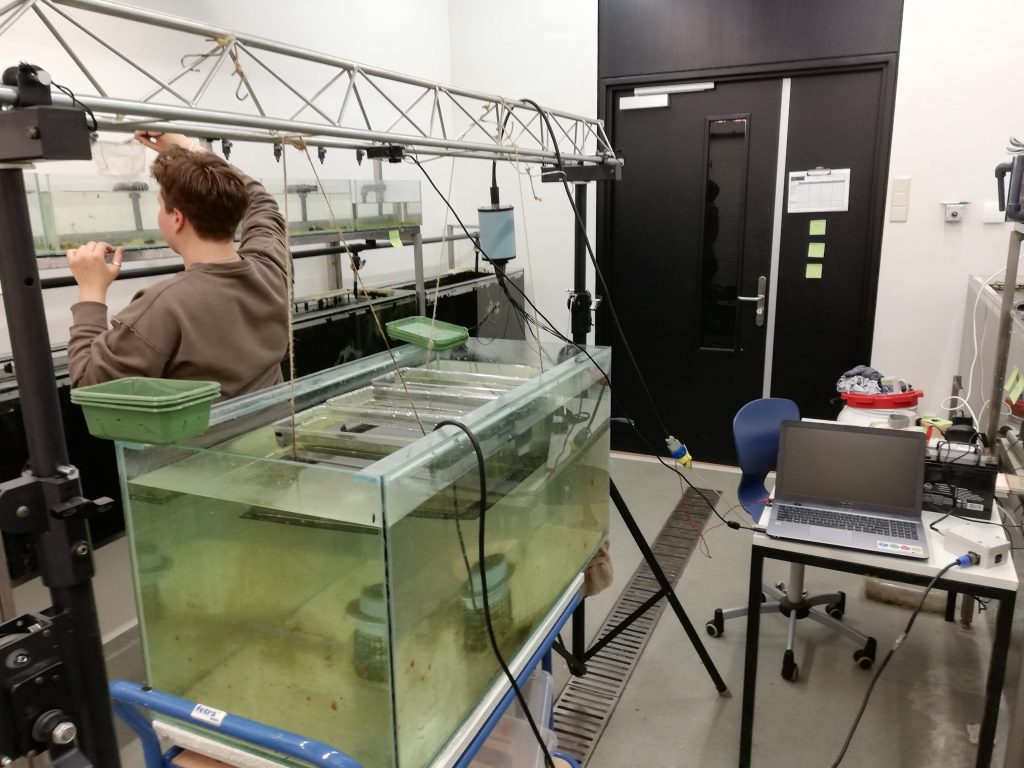We published a new paper ‘Separate and combined effects of boat noise and a live crab predator on mussel valve gape behavior’ and it’s open access (link)! The paper is authored by Daniëlle van der Burg, Rob Witbaard, Hans Slabbekoorn and myself.
Mussels can respond to various stimuli by closing their valves. This protects their soft tissue, but limits their feeding behaviour. In the current study, we wanted to know whether a combination of – potentially threatening – stimuli would elicit even stronger responses. The test this, we exposed mussels to sound (boat or ambient playbacks) and a live crab predator (chemical cues only, a ‘free-ranging’ crab, or a control without crab).
Mussels had a lower valve gape during boat sound and when the ‘free-ranging’ crab was present. The combination did not lead to an even lower valve gape. We also showed that the proximity of the ‘free-ranging’ crab to the mussel was linked to the valve gape of the mussel.
Nature is complex and full of stimuli. That’s why it’s important to not only study the effect of single stressors, but also to combine them and prevent ‘ecological surprises’.
All data and scripts have been made publicly available too.





